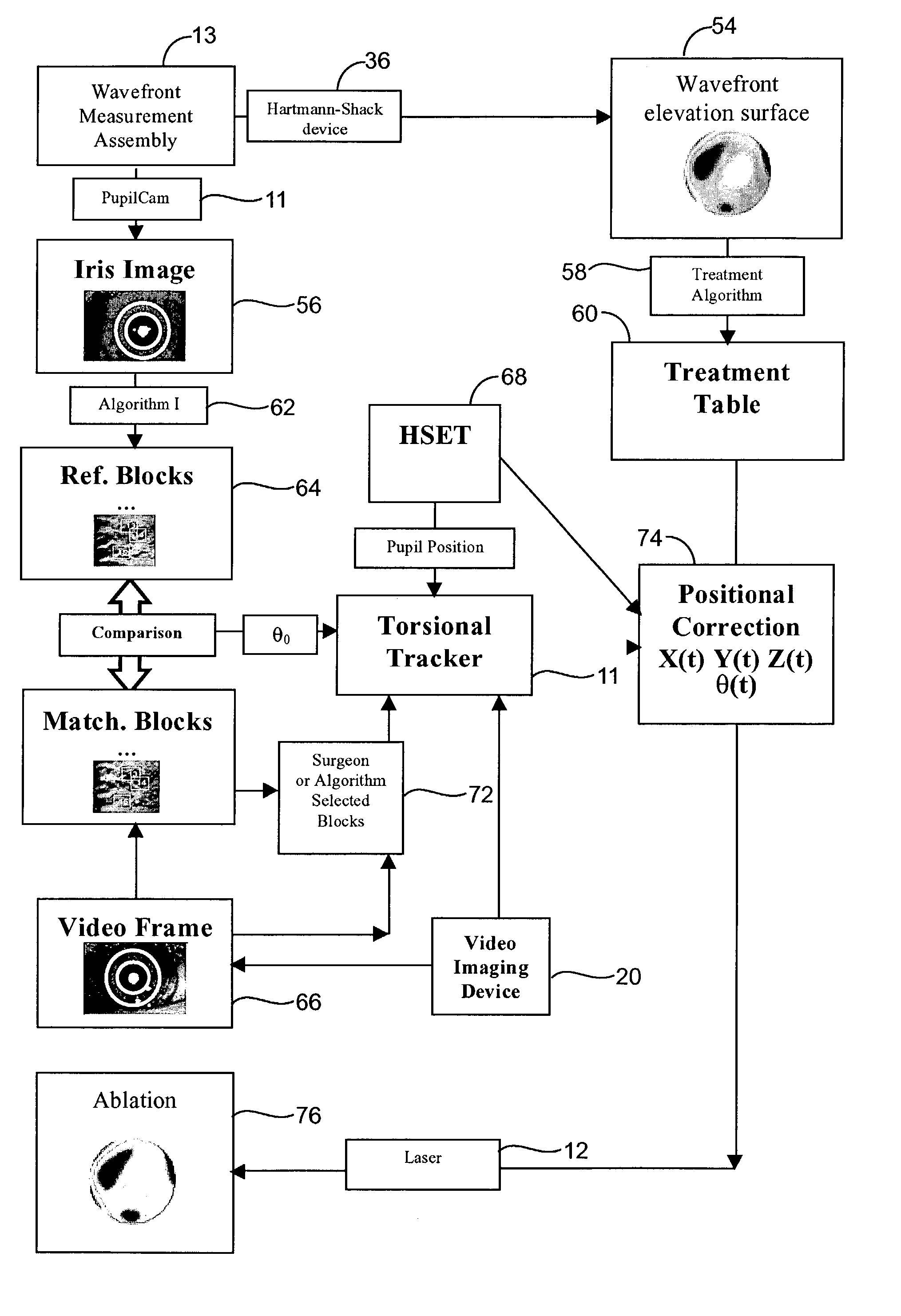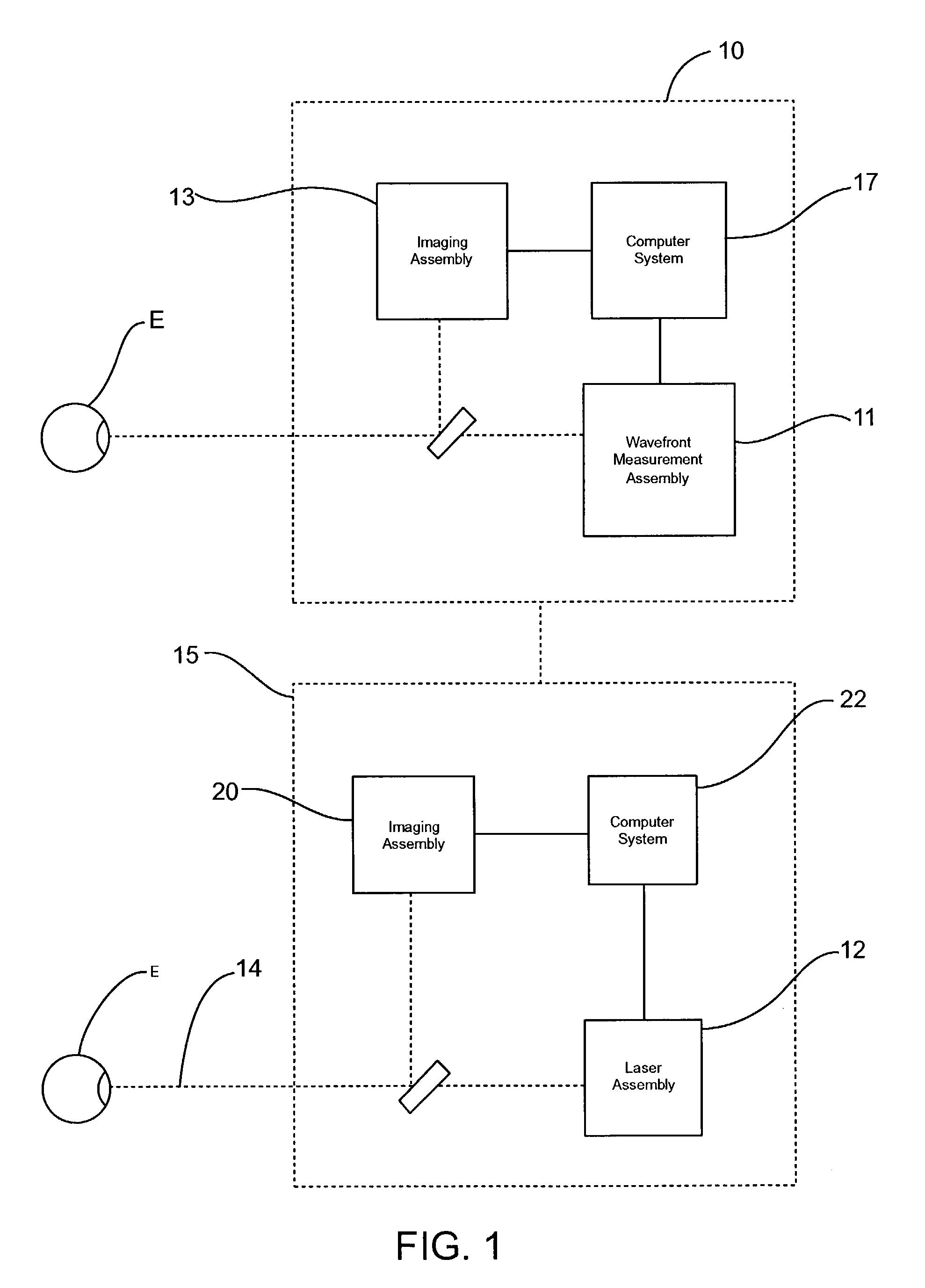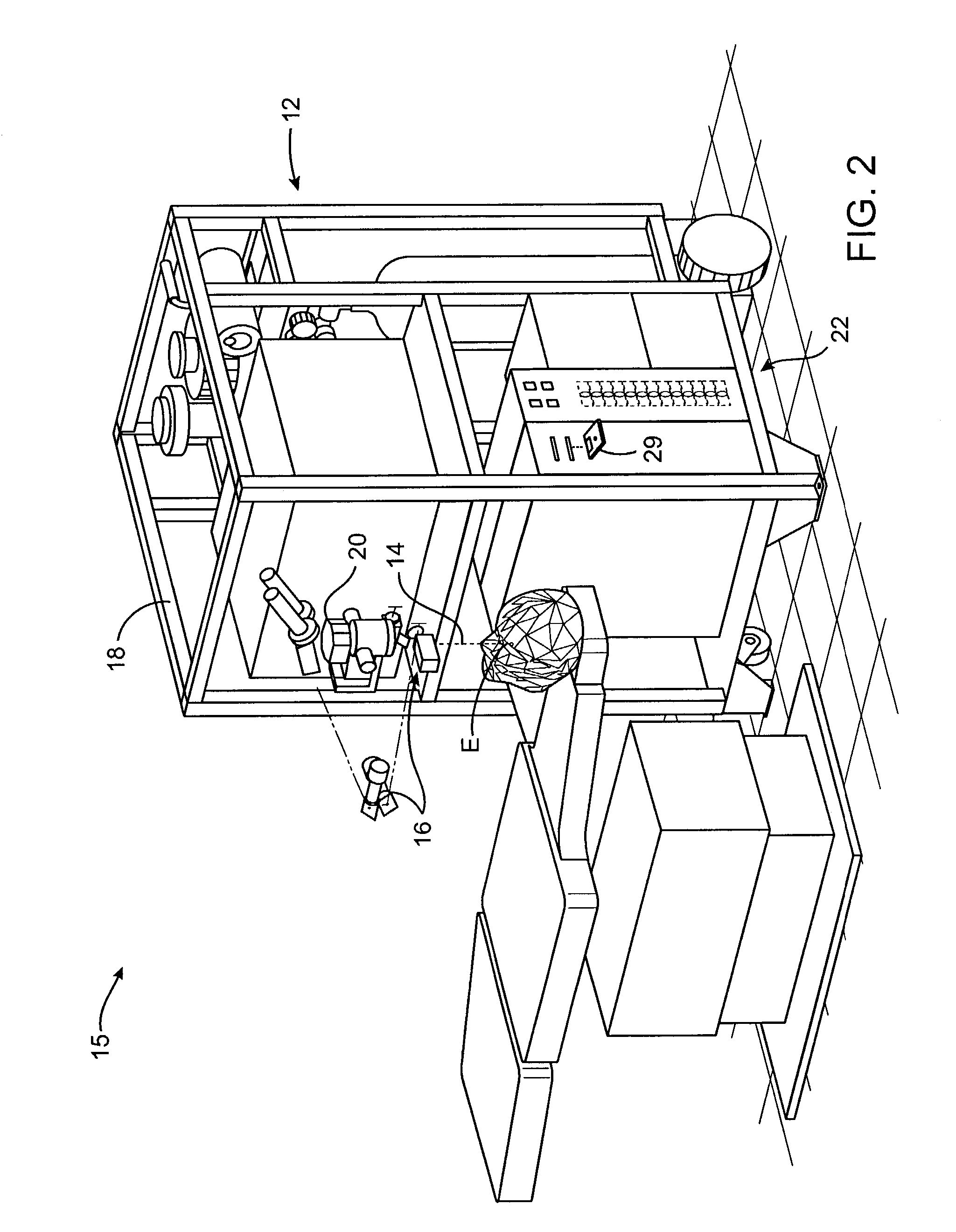Methods and systems for tracking a torsional orientation and position of an eye
a technology of torsional orientation and positioning, applied in the field of laser eye surgery methods and systems, can solve the problems of non-immunity of measurement system to measurement error, poor actual visual accuities provided by real-world wavefront correction system, and inability to deliver customized ablation patterns to the patient's eye, etc., to achieve the effect of improving laser eye surgery
- Summary
- Abstract
- Description
- Claims
- Application Information
AI Technical Summary
Benefits of technology
Problems solved by technology
Method used
Image
Examples
Embodiment Construction
[0062]The present invention is particularly useful for enhancing the accuracy and efficacy of laser eye surgical procedures such as photorefractive keratectomy (PRK), phototherapeutic keratectomy (PTK), laser in situ keratomileusis (LASIK), and the like. The efficacy of the laser eye surgical procedures can be enhanced by tracking the torsional orientation of the patient's eye so that a laser ablation pattern is more accurately aligned with the real-time orientation of the patient's eye.
[0063]While the system and methods of the present invention are described primarily in the context of improving a laser eye surgery system, it should be understood the techniques of the present invention may be adapted for use in alternative eye treatment procedures and systems such as femtosecond lasers and laser treatment, infrared lasers and laser treatments, radial keratotomy (RK), scleral bands, follow up diagnostic procedures, and the like.
[0064]FIG. 1 schematically illustrates a simplified sys...
PUM
 Login to View More
Login to View More Abstract
Description
Claims
Application Information
 Login to View More
Login to View More - R&D
- Intellectual Property
- Life Sciences
- Materials
- Tech Scout
- Unparalleled Data Quality
- Higher Quality Content
- 60% Fewer Hallucinations
Browse by: Latest US Patents, China's latest patents, Technical Efficacy Thesaurus, Application Domain, Technology Topic, Popular Technical Reports.
© 2025 PatSnap. All rights reserved.Legal|Privacy policy|Modern Slavery Act Transparency Statement|Sitemap|About US| Contact US: help@patsnap.com



